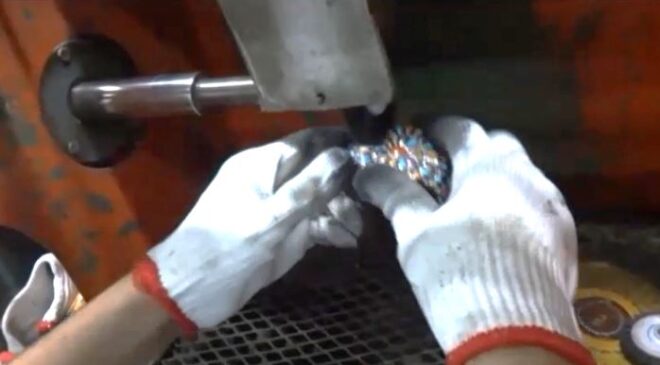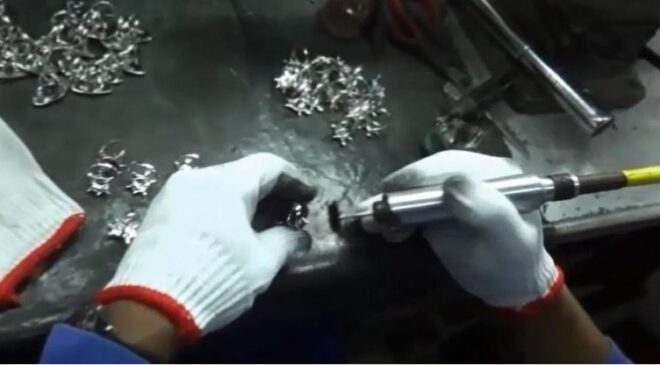Step into the world of turquoise, a gemstone that has captivated hearts for centuries with its mesmerizing blend of blue and green hues. Have you ever stopped to ponder just how those breathtaking pieces of turquoise jewelry are crafted? Turquoise Network invites us on a short adventure as we explore the intricate process of transforming raw turquoise into wearable masterpieces.
Sourcing the Turquoise
The journey begins with sourcing high-quality turquoise. Turquoise is found in mines across the world, including the United States, Mexico, Iran, China, and Egypt. The gemstone is extracted from the earth in the form of rough chunks or nuggets. These raw pieces vary in color, matrix patterns, and quality.

Stabilization and Enhancement
Natural turquoise is relatively brittle and porous, and therefore prone to cracking and changing color over time. To enhance its durability and color, stabilization techniques are often applied. The stabilization process involves impregnating the turquoise with clear epoxy resin and dyes, which strengthens the gem and enhances its color vibrancy. This treatment ensures that the turquoise retains its beauty for years to come.
Cutting and Shaping
Once stabilized (hardened), the turquoise is carefully cut and shaped into various forms. Experienced lapidary craftsmen use precision tools to transform the rough chunks into shaped stones (“cabochons”), beads, or intricate inlay pieces. The shape and size of the turquoise will obviously depend on the desired jewelry design.

Cutting & Shaping Turquoise
Designing the Jewelry
Artisans and designers get the fun part – creating unique turquoise jewelry styles! Native Americans, Filipinos, Egyptians, Mexicans, Thai, Nepalese, and other artists worldwide come up with amazing designs that showcase the beauty of turquoise. Whether traditional or contemporary looks, turquoise can be found in all types of jewelry, including turquoise rings, earrings, necklaces, bracelets, and more.
Reads More: Lost Wax Technique Process
Setting the Turquoise
Setting turquoise requires great skill since the stone is still relatively soft, even after it has been stabilized. Various techniques are utilized depending on the piece, but turquoise is generally surrounded by a metal rim – called a “bezel” – that secures it in place. This not only protects the gem but also enhances its appearance by contrasting the metal with the vibrant colors of the turquoise.

Inlay setting is another very labor-intensive technique used to create intricate patterns and designs. Turquoise pieces are carefully cut to fit precisely into metal or other materials, creating a mosaic-like effect. This technique is often seen in American Southwestern-style jewelry, where turquoise is combined with other colorful stones and shells.

Inlay-set jewelry courtesy of Turquoise Network
Buffing & Polishing
After the turquoise is securely set, the jewelry piece undergoes final polishing and finishing touches. Polishing enhances the luster of the metal and the brilliance of the turquoise. Any excess materials or imperfections are meticulously removed.


Quality Control
Before turquoise jewelry reaches the market, it goes through rigorous quality control. Jewelers inspect each piece to ensure that the turquoise is secure, the metalwork is sound, and the overall craftsmanship meets high standards. Unlike machine-made items, imperfections are to be expected given the nature of turquoise and character of handmade jewelry.
Appreciating the Craftsmanship
The journey from raw turquoise to finished jewelry is, indeed, a laborious and intricate process that requires great care and attention to detail. The lucky person wearing it should take a moment to reflect on the incredible journey the jewelry has taken, from the depths of the earth to wearable art. Turquoise’s rich history and timeless allure should put a smile on everyone’s face!

To learn more about the different types of turquoise in today’s market, visit Turquoise Network.



